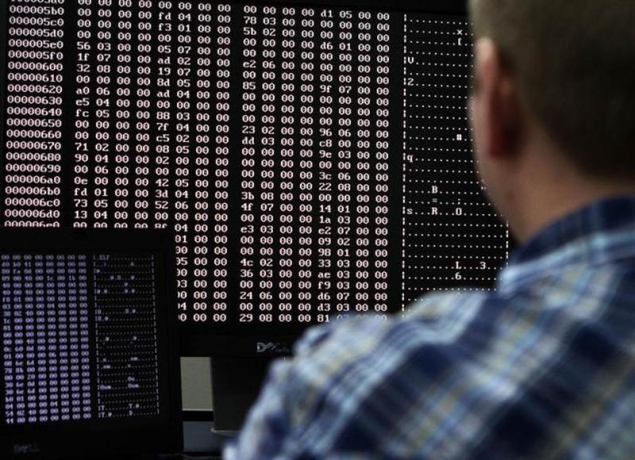- Home
- Internet
- Internet News
- Researchers develop 'unbreakable' security codes inspired by nature
Researchers develop 'unbreakable' security codes inspired by nature

Scientists at Lancaster University, who patented the new method, said they were inspired by how the heart and lungs coordinate their rhythms by passing information between each other.
A mathematical model based on the complex interaction between these organs has now been translated to the world of modern communications, the researchers said.
This discovery could transform daily life, which is today completely reliant on secure electronic communications for everything from mobiles to sensor networks and the Internet, the researchers said.
According to the team, in modern times, every device and service, from car keys to online bank account, contain different identification codes enabling information to be transferred in confidence.
The new mathematical model offers an infinite number of choices for the secret encryption key shared between the sender and receiver.
This makes it virtually impossible for hackers and eavesdroppers to crack the code, the Lancaster University researchers said.
The new method is exceptionally resistant to interference from the random fluctuations or "noise" which affects all communications systems.
According to the researchers, it can also transmit several different information streams simultaneously, enabling all the digital devices in the home, for example, to operate on one encryption key instead of dozens of different ones.
"This promises an encryption scheme that is so nearly unbreakable that it will be equally unwelcome to Internet criminals and official eavesdroppers," said researcher Professor Peter McClintock.
For the latest tech news and reviews, follow Gadgets 360 on X, Facebook, WhatsApp, Threads and Google News. For the latest videos on gadgets and tech, subscribe to our YouTube channel. If you want to know everything about top influencers, follow our in-house Who'sThat360 on Instagram and YouTube.
Related Stories
- Samsung Galaxy Unpacked 2025
- ChatGPT
- Redmi Note 14 Pro+
- iPhone 16
- Apple Vision Pro
- Oneplus 12
- OnePlus Nord CE 3 Lite 5G
- iPhone 13
- Xiaomi 14 Pro
- Oppo Find N3
- Tecno Spark Go (2023)
- Realme V30
- Best Phones Under 25000
- Samsung Galaxy S24 Series
- Cryptocurrency
- iQoo 12
- Samsung Galaxy S24 Ultra
- Giottus
- Samsung Galaxy Z Flip 5
- Apple 'Scary Fast'
- Housefull 5
- GoPro Hero 12 Black Review
- Invincible Season 2
- JioGlass
- HD Ready TV
- Laptop Under 50000
- Smartwatch Under 10000
- Latest Mobile Phones
- Compare Phones
- Moto G15 Power
- Moto G15
- Realme 14x 5G
- Poco M7 Pro 5G
- Poco C75 5G
- Vivo Y300 (China)
- HMD Arc
- Lava Blaze Duo 5G
- Asus Zenbook S 14
- MacBook Pro 16-inch (M4 Max, 2024)
- Honor Pad V9
- Tecno Megapad 11
- Redmi Watch 5
- Huawei Watch Ultimate Design
- Sony 65 Inches Ultra HD (4K) LED Smart TV (KD-65X74L)
- TCL 55 Inches Ultra HD (4K) LED Smart TV (55C61B)
- Sony PlayStation 5 Pro
- Sony PlayStation 5 Slim Digital Edition
- Blue Star 1.5 Ton 3 Star Inverter Split AC (IC318DNUHC)
- Blue Star 1.5 Ton 3 Star Inverter Split AC (IA318VKU)
-
 OnePlus 13R Design, Key Features Revealed Ahead of January 7 Launch; Buds Pro 3 to Get New Colour
OnePlus 13R Design, Key Features Revealed Ahead of January 7 Launch; Buds Pro 3 to Get New Colour
-
 Lenovo Yoga Slim 7i Aura Edition With Intel Lunar Lake Processor Launched in India: Price, Specifications
Lenovo Yoga Slim 7i Aura Edition With Intel Lunar Lake Processor Launched in India: Price, Specifications
-
 HMD Arc With 60Hz HD+ Display, 13-Megapixel Rear Camera Launched: Specifications
HMD Arc With 60Hz HD+ Display, 13-Megapixel Rear Camera Launched: Specifications
-
 Ancient Human Remains Reveal Brutal 4,000-Year-Old Massacre in Somerset
Ancient Human Remains Reveal Brutal 4,000-Year-Old Massacre in Somerset












